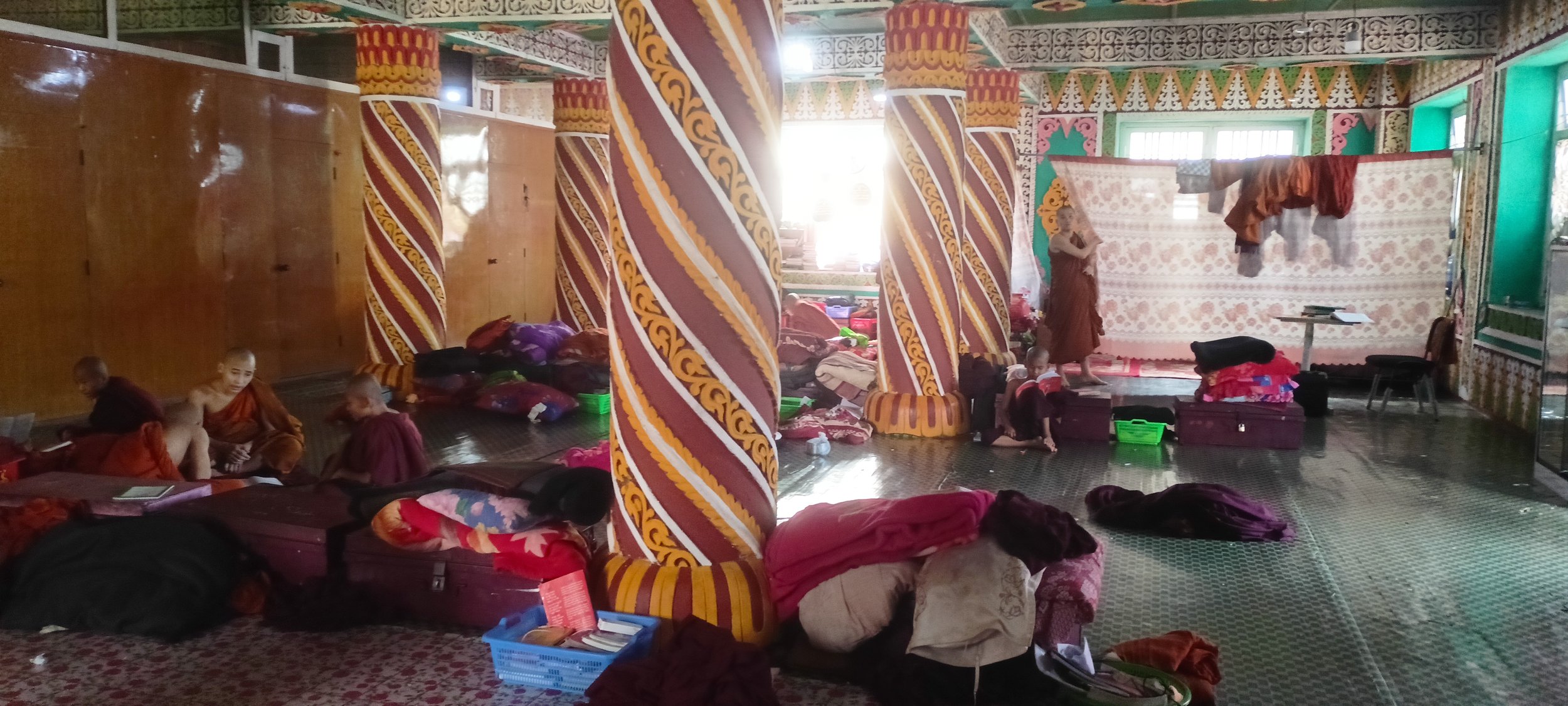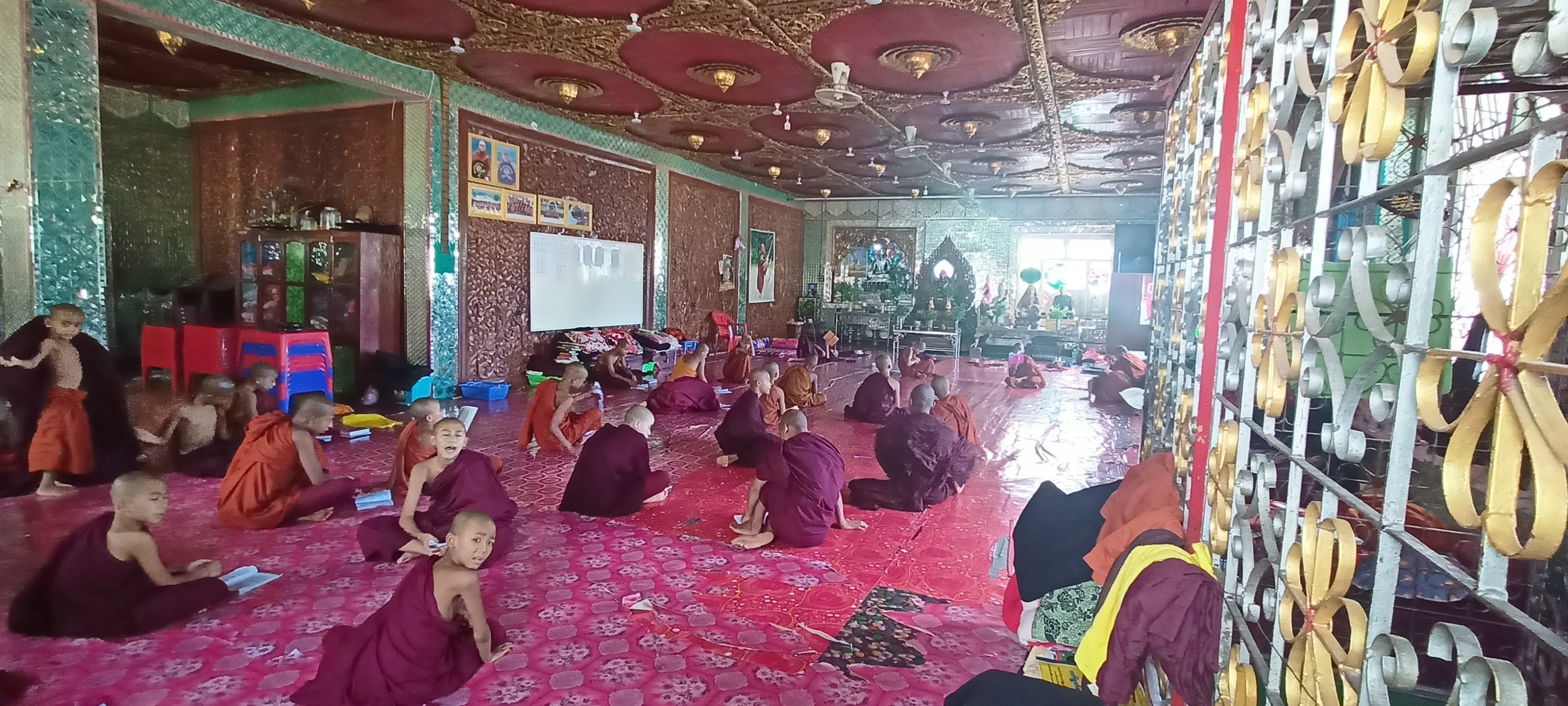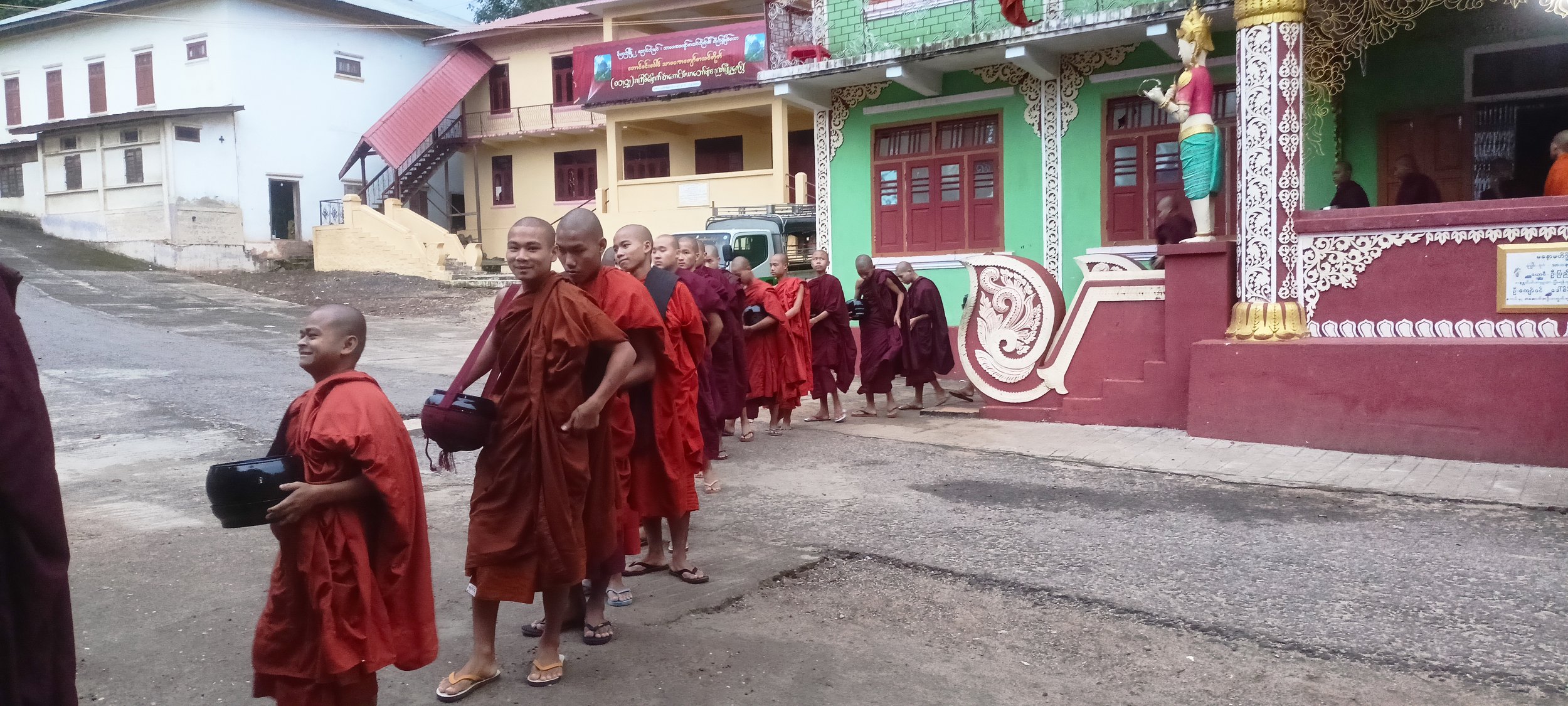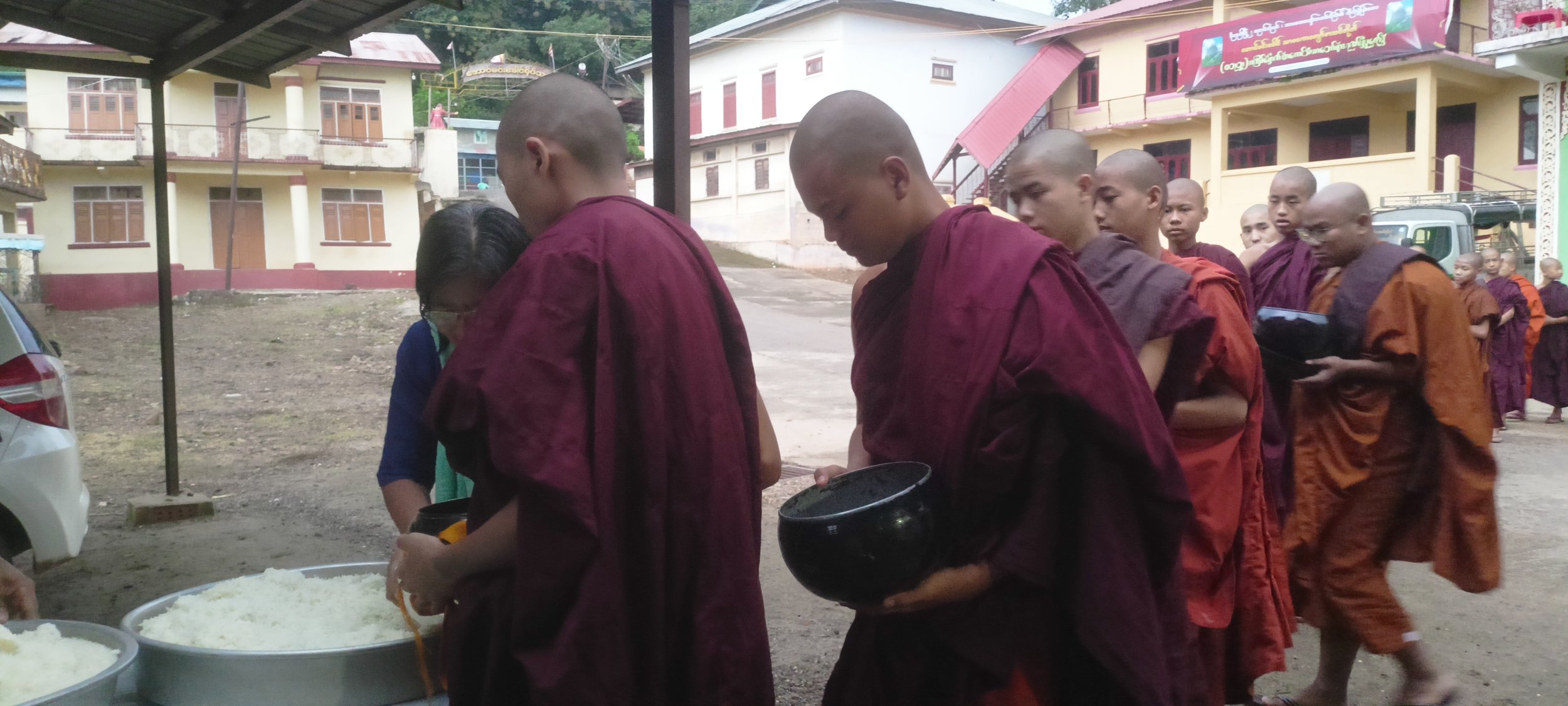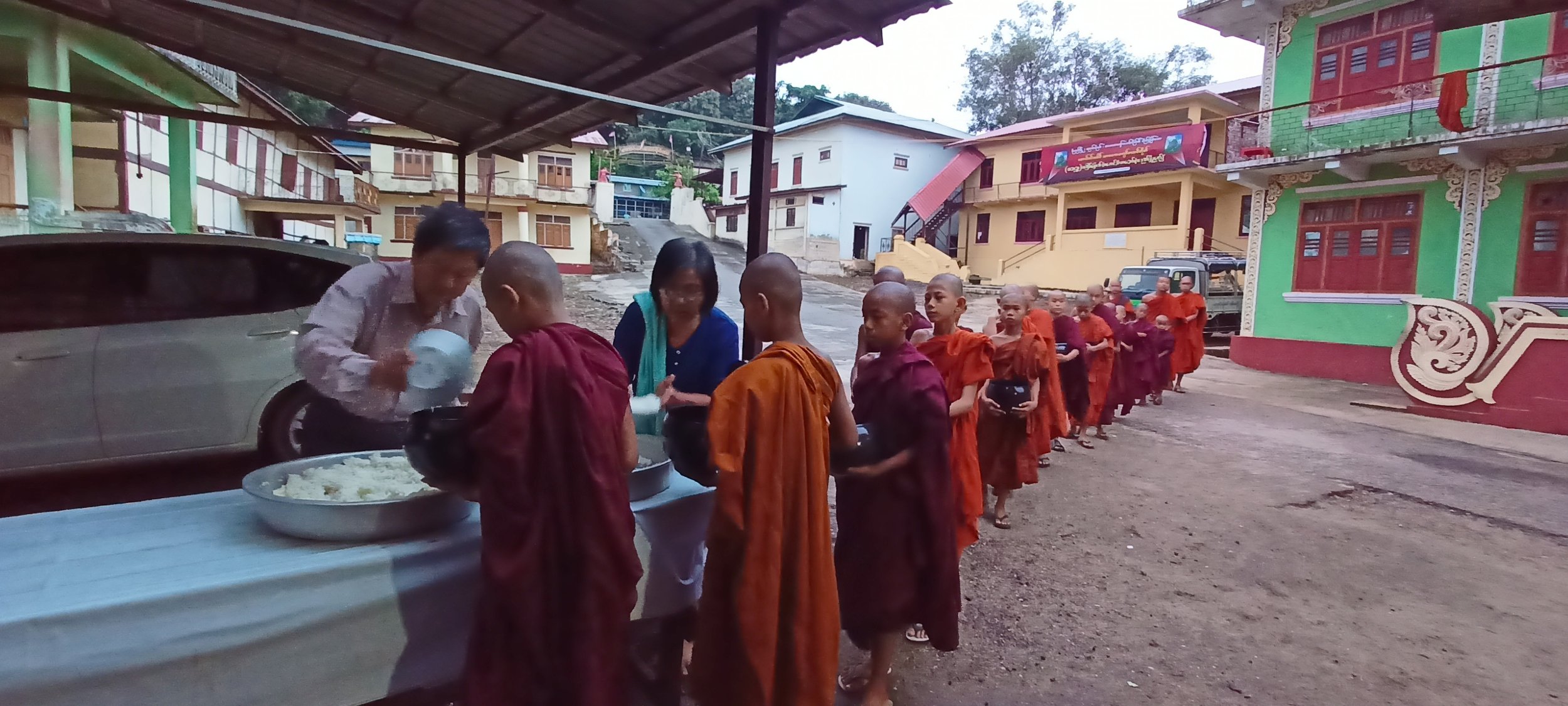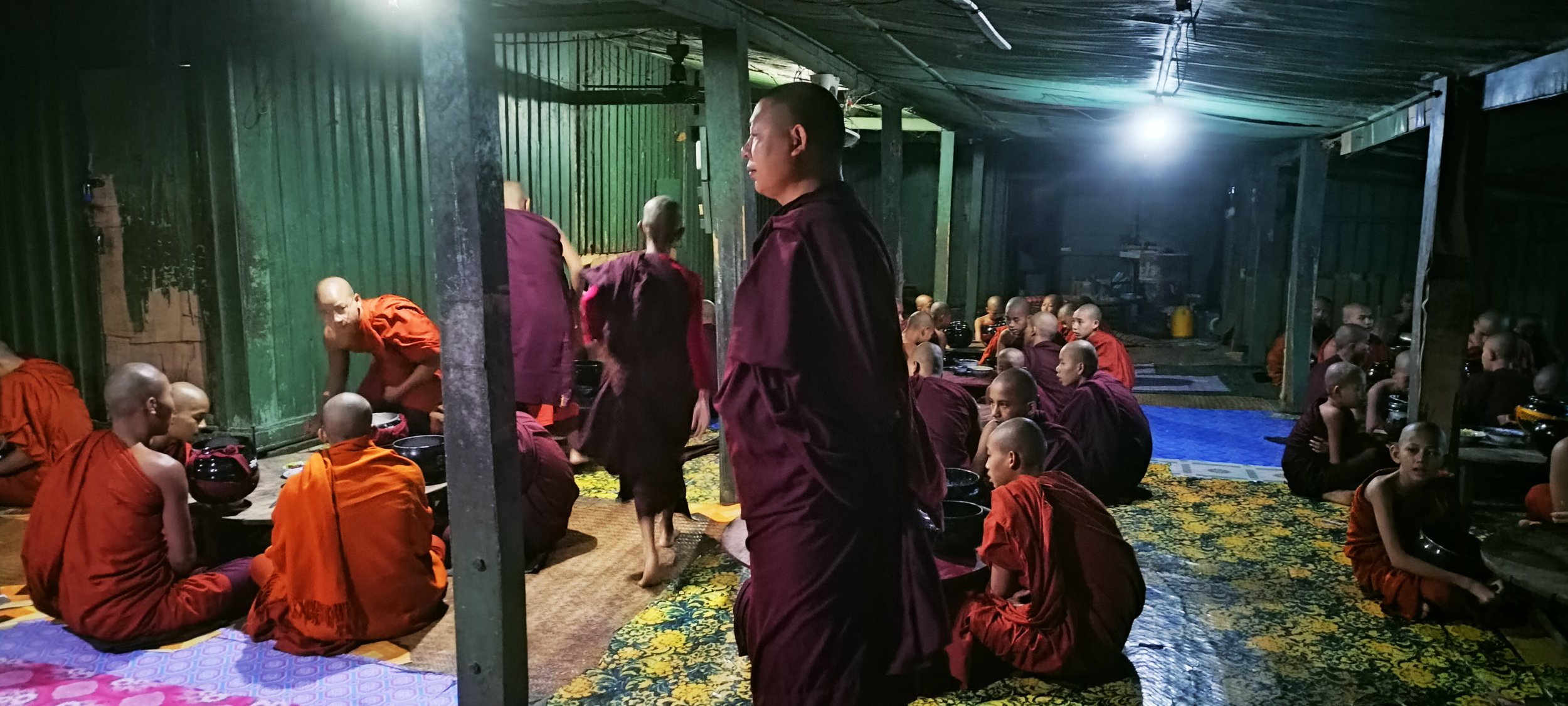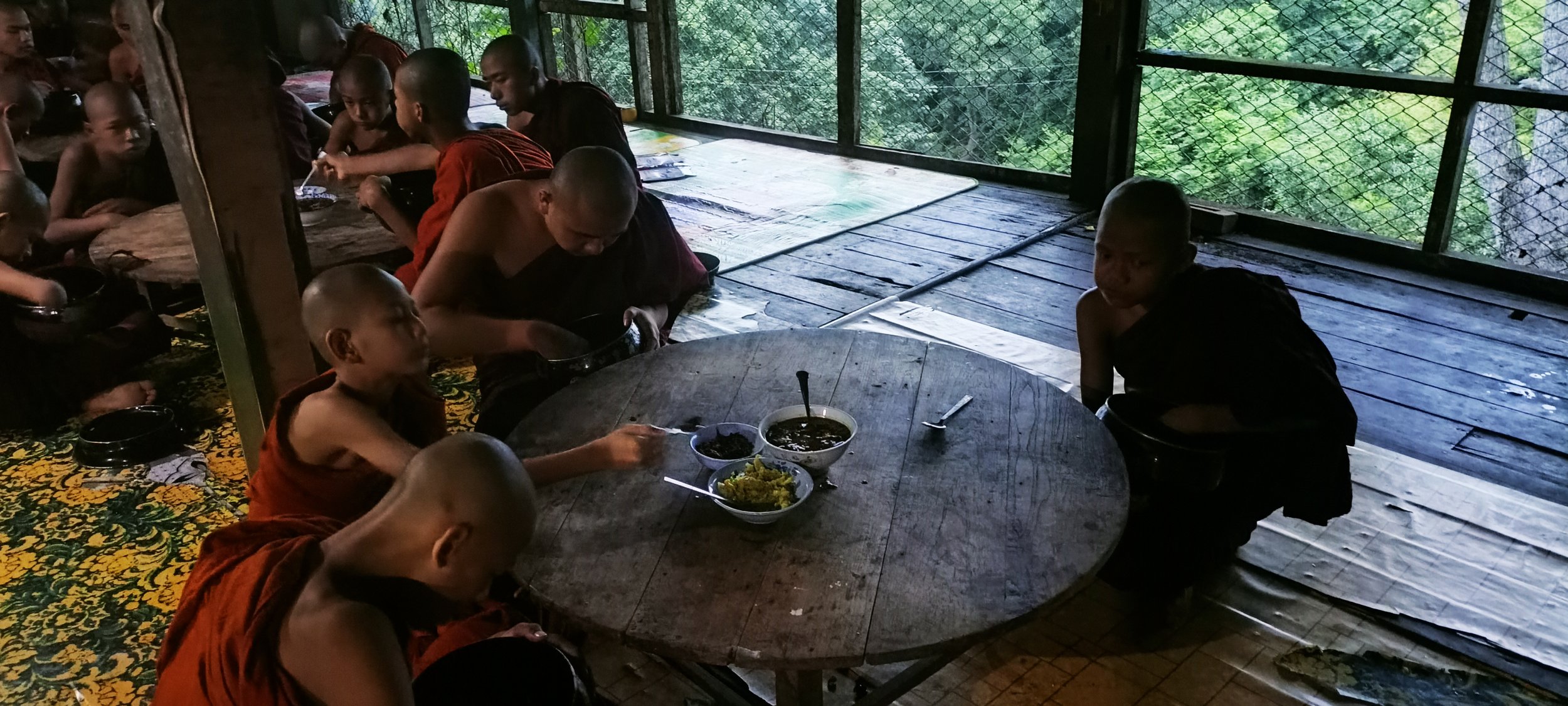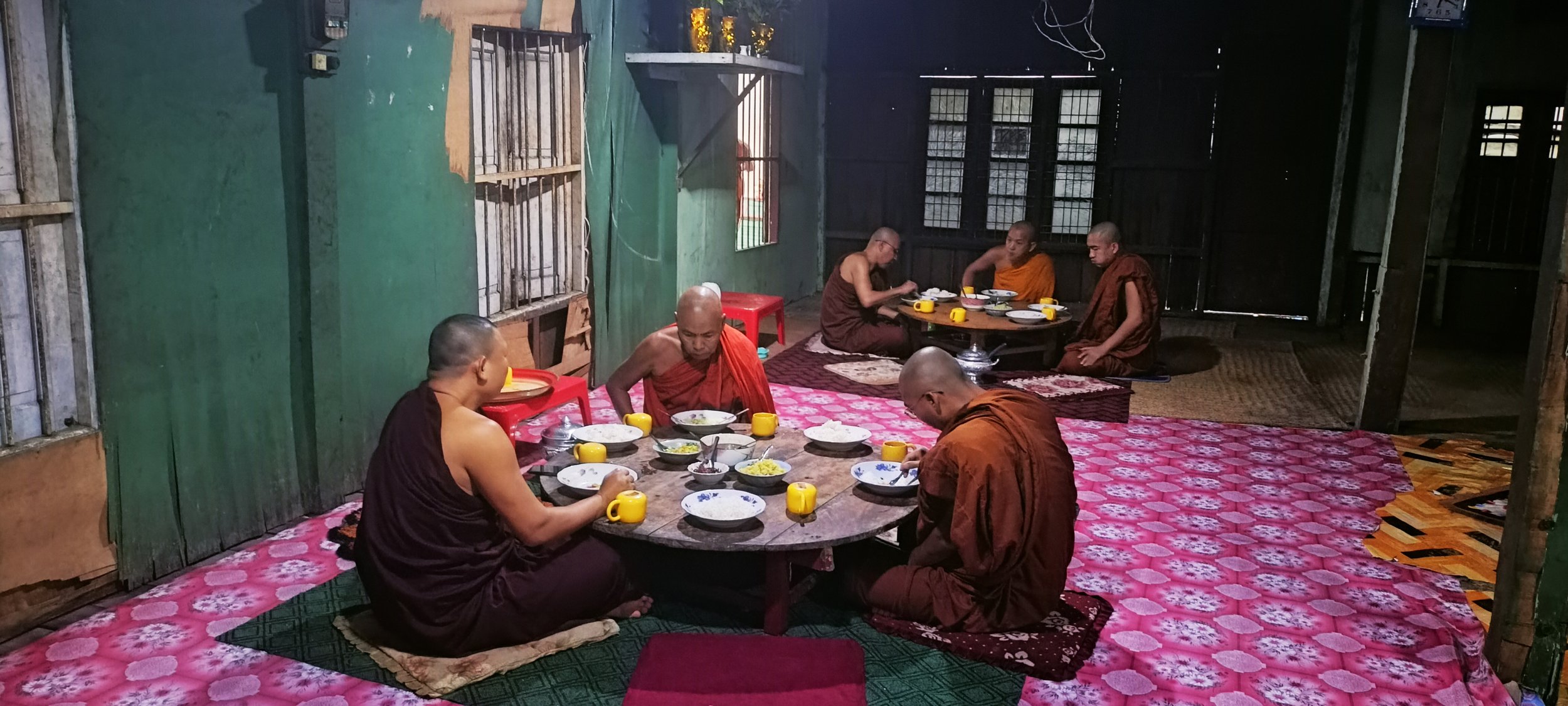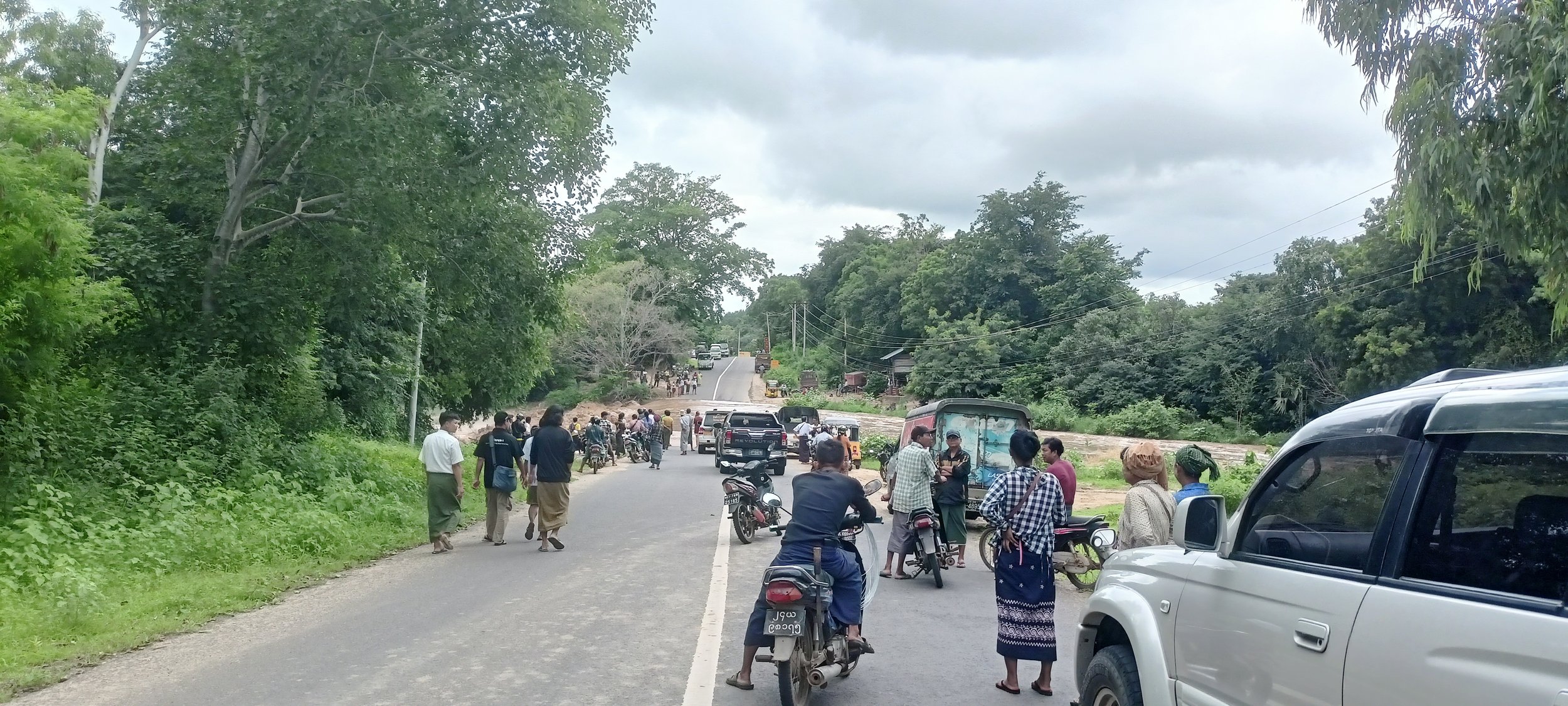Fleeing Ruby Land
The following report, written by our team leader, provides a detailed account of a recent humanitarian effort in Myanmar. It highlights the plight of monastic communities displaced by ongoing conflict and the support extended to them through donations from overseas. The narrative recounts the challenges faced by monks and novices as they fled violence in Mogok and our subsequent efforts to provide them with food and shelter in their new location. Through this lens, the team leader underscores the importance of international solidarity in supporting those affected by both conflict and natural disasters in Myanmar.
We recently conducted a monastic donation project for internally displaced monastics (IDPs) from Mogok, Myanmar's renowned "ruby land." Prior to this, we engaged in preliminary studies and communicated with the leading monk of our targeted monastic community. Our beneficiaries were evacuees from the Nyaung Thone Bin Samanera School in Mogok, forced to flee due to armed conflicts between the Myanmar military and the resistance forces.
Beforehand, approximately 100 novice monks were studying at the Samanera school. When fighting erupted in the western part of Mogok, the novices and their teacher monks initially remained within the monastery. However, as the conflict intensified and moved closer to the eastern part of the town, fierce battles broke out near the monastery, which was strategically important to both sides. Situated next to the military's Strategic Hill base, the monastery became a focal point; according to the leader monk I contacted, artillery was fired from the hill towards the insurgent forces about 200 times.
Despite the leading monks' disapproval and requests for them to relocate, a few military troops established a base within the monastery, citing orders from their superiors. As ethnic forces approached both the monastery and Strategic Hill, the leading monks assigned one of their own to escort a group of young novices to safety outside the town.
After about a month, the ethnic forces gained control of Mogok, allowing the monks to return safely to the monastery. However, the leading monks decided to relocate the novices to a safer location, anticipating potential airstrikes from remnant junta forces in the township. Moreover, the monastery had suffered significant damage, making it unsafe for continued habitation.
The decision was made to split the novices into two groups. Half were to be relocated to an affiliated monastery in the Mount Popa area, while the younger novices—those under the age of ten—were to be sent back to their parents in Depayin and Ye-U Townships in the Sagaing Region, per their families' requests.
Their journey was fraught with challenges. The usual routes were impassable, so they had to stay overnight in various locations, crossing streams and rivers on motorcycles. The truck they traveled in often lost its way on muddy roads winding through cornfields, frequently getting stuck. The older novices would disembark to push the vehicle through the mud.
Eventually, they reached Pyin Oo Lwin and continued onward to Mandalay. However, communication was soon disrupted again as he led the group of young novices to their native villages in the Sagaing Region, where telecommunications were frequently unreliable. Upon arrival, they faced another ordeal: local resistance forces were conducting a military campaign to capture Depayin, and the town soon suffered airstrikes. Although their villages were nearby and they could hear the conflict, they remained safe, and Venerable Paññā successfully reunited the novices with their parents.
Meanwhile, the other group continued to Mount Popa and eventually reached their affiliated monastery. Upon learning that the monks and novices had settled there, we organized a trip to provide them with food assistance, thanks to funds provided by our overseas donors. We offered 20 sacks of high-quality rice, 50 viss (approximately 81 kilograms) of pure peanut oil, and 25 viss (about 41 kilograms) of potatoes to support the monastic IDPs and the existing residents of the host monastery, totaling 97 monastics.
The host monastery in Mount Popa, Aung Min Khaung Monastery, is an associate monastic school of the Nyaung Thone Bin Samanera School in Mogok. The late abbot of Aung Min Khaung had requested the late founding abbot of Nyaung Thone Bin—a real Bodhisattva—to transform it into a Pariyatti school, a traditional Buddhist monastic institution. Previously, it had been a meditation center. Consequently, several assistant monks from Mogok were sent to Mount Popa five or six years ago to teach there. Both abbots have since passed away—the former in 2018 and the latter in 2022.
None of this would have been possible without the unwavering generosity of our supporters overseas. Through their kindness, we have been able to provide crucial aid to monastic communities displaced by conflict and to those struggling in the aftermath of natural disasters. Their support has been a beacon of hope during these dark times, allowing us to continue our mission to assist those in need. As we move forward, we remain deeply grateful to all who have stood by us, making it possible to deliver relief and hope where it is most needed.
